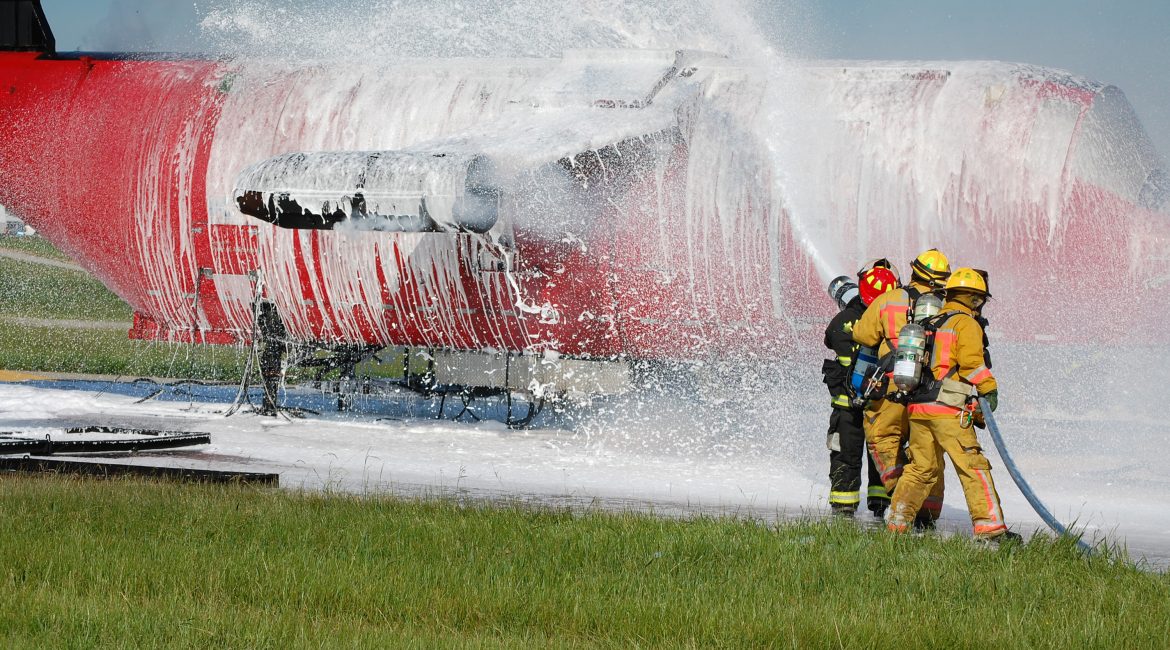As regulatory agencies will soon prohibit the use of aqueous film forming foam (AFFF), fire fighters, especially at airports, have begun the transition to foams without per- and polyfluoroalkyl substances (PFAS). In this article we discuss issues related to the transition.
Are the new foams available, affordable, and safe to use?
As of March 2024, the Department of Defense (DOD) and the Federal Aviation Administration (FAA) have approved two foams in the United States that meet military performance specification (MIL-PRF-32725): Solberg and
BIO-EX. The costs for these products are similar to AFFF, which is about $30 a gallon. National Foam expects its foam, Avio Green, will meet MIL-PRF-32725 later this year.

Note that the foams work best when the existing vehicles and systems are carefully cleaned of the residual AFFF. Residues left in the tanks or pipes can cause clogging after introduction of the fluorine-free foams. Further, residues will dissolve into the new foams so that the PFAS content will increase to unacceptable levels.
The new fluorine-free foams are safe to use only after the thorough cleaning of the vehicles.

How can I get my AFFF vehicles and systems cleaned?
Water rinsing is not very effective, as it leaves AFFF residues and potentially foam concentrate behind. Therefore, it is important to use a more thorough cleaning agent and process. TRS Group (TRS) uses PerfluorAd, a natural, biodegradable agent, which we heat and flush through the vehicle multiple times, a process that takes three to seven days, depending on the size and complexity of the system. The surfactant-like PerfluorAd ionically bonds to and removes AFFF residues and PFAS from foam tanks, pipes and proportioners. We then treat the rinsate, producing clean water for discharge and a small amount of waste for off-site disposal that includes the AFFF
concentrate drained from tanks, flocculant, and spent granular activated carbon.
Where can I get my vehicles cleaned?
Currently, TRS is building several PerfluorAdTM clean-out systems and adding staff to serve the market. A unique feature of PerfluorAd is that it is not only an ideal cleaning agent, but it is also a flocculent that dramatically
reduces the volume of waste requiring disposal. TRS cleans the entire vehicle including the AFFF tank, piping, cannons and turrets providing a more thorough removal of AFFF and PFAS. Other firms use different agents and may only clean the AFFF storage tank. Also, when comparing pricing, we encourage you to include water rinsate
disposal costs.

Is firetruck cleaning cost-prohibitive?
ARFF vehicles cost between $800,000 and $1.5 million. The cost to clean the trucks and make them ready for
fluorine-free foam is between $60,000 and $100,000, depending on the number of trucks and their size and
complexity. Thus, you could clean 15 to 20 ARFF vehicles for the cost of buying a new one.
Where do AFFF-impacted vehicles go if I replace them?
Used ARFF vehicles typically get sold at auctions or to firms that rent them. While uncleaned vehicles may pass the PFAS problem to the buyer, the seller could retain the environmental liability. Further, the remaining PFAS can impede firefighting performance.
Ready to transition to F3?
Please contact David Fleming at dfleming@atriplef.com.





